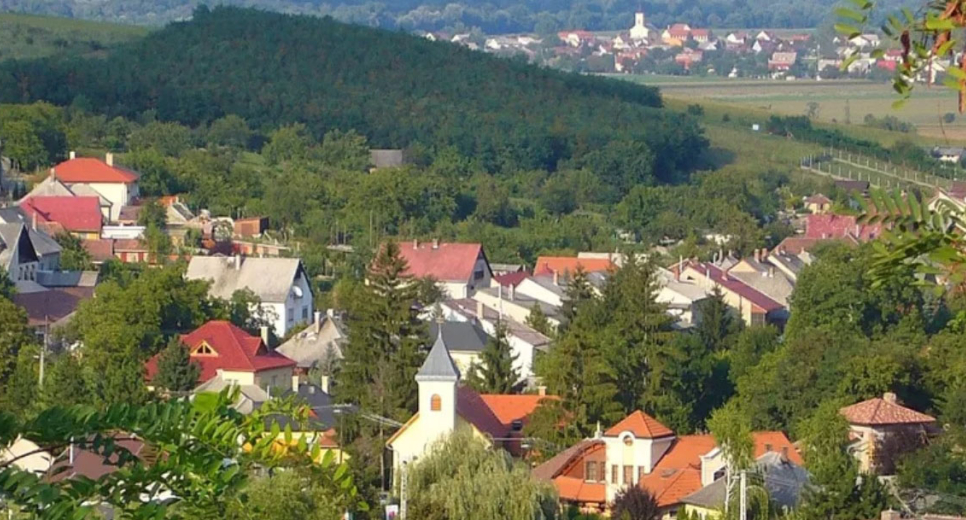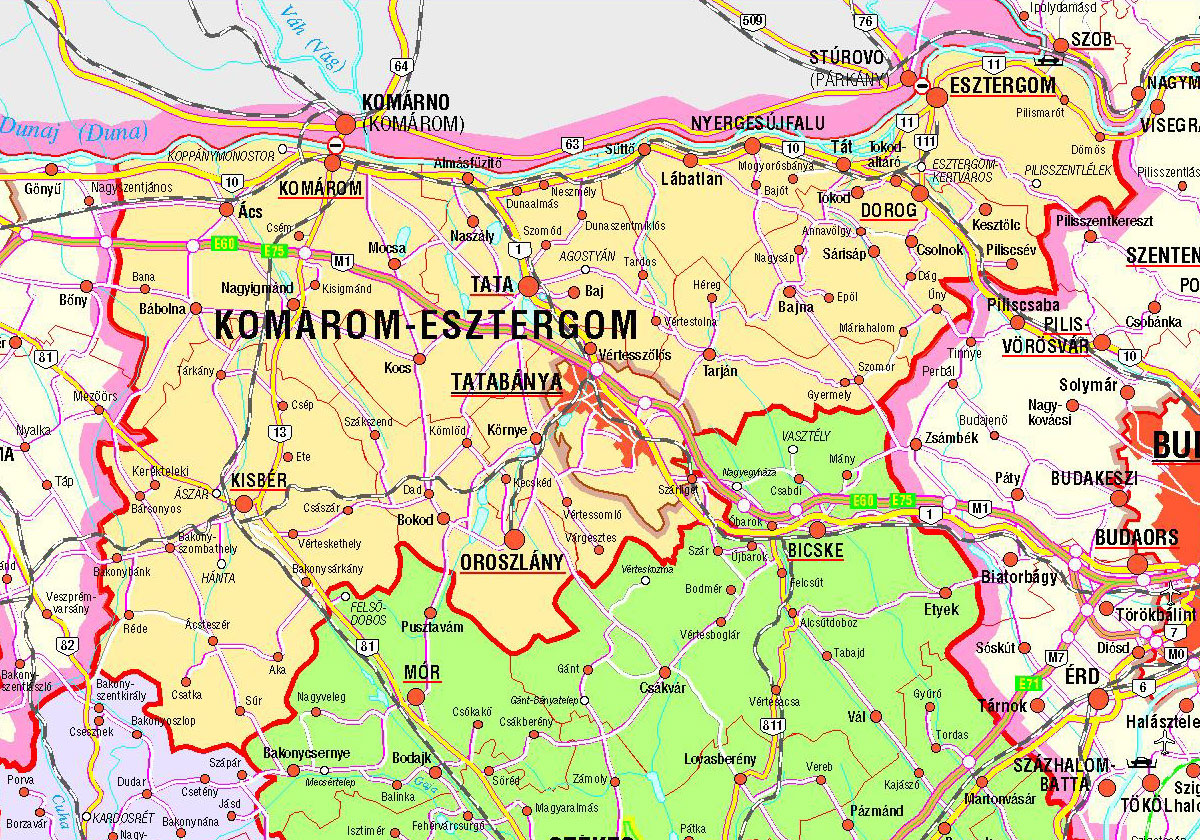
Cities, villages

During the formation of the settlements, the geographical factors of the settlement determined the location of the streets and houses of each village in the Komárom-Esztergom county. The majority of the villages are part of the group settlements, partly due to the Turkish subjugation, partly due to their later growth, according to other literature, the so-called they can be classified as cluster villages (e.g. Ászár, Bajna, Császár, Dad, Héreg, Kocs, Mocsa, Nagyigmánd, Pilismarót, Tata). Most of them were formed from three sets (Burgundia, Gurgyal, Öreg utca) and smaller groups connected to them from the beginning of the 19th century (e.g. Cigánysor, Kertalja, Kis utca, Rajna, Tabán, Tófenék, Újtelep).
Cities, villages
Öreg utca is the ancient nucleus of the settlements (Bokod, Császár, Kocs, Mocsa, Nagyigmánd, Szend, Tóváros, Vérteskethely) and is also the oldest street of the "colony" in Tatabánya. Nobles and more sophisticated farmers lived here in Kocson. The name Burgundia, Burga (Bokod, Dad, Császár, Héreg, Kocs, Oroszlány, Réde, Súr, Szák, Szend, Tardosbánya, Tata) denoted the streets built around the Catholic church. Married squires lived in the Gurgyal, Gurdon area. The name Tabán (e.g. Bajna, Dág, Gyermely, Tata, Úny) can be traced back to Turkish origins. Gypsy row was called Péro in many places. Most of the villages were divided into Alszeg and Felszeg (Bajna, Bakonyszombathely, Bókod, Dad, Epöl, Ete, Nagysáp, Naszály, Neszmély, Nyergesújfalu, Szák). Alvég and Felvég occurred in two cases (Pilismarót, Tokod). Settlers arriving in the Komárom-Esztergom county in the 18th century became residents of uti villages consisting of one street. In the course of time, these settlements were expanded with several streets, but still preserved their street character (e.g. Dunaszentmiklós, Leányvár, Máriahalom, Vértessomló, Vértestolna).
It is characteristic of some of the Uti villages, especially the villages settled in the Gerecse valley, that their streets widen like a spindle. In these villages (e.g. Baj, Bajna, Bakonybánk, Bánhida, Csatka, Dad, Ete, Környe, Nagysáp, Pilismarót, Réde, Tardos, Tarján, Vértesszőlős, Vérteskethely) a Catholic church, a village hall, and a World War I hero's monument were placed on the vacant space. they built. In some settlements, a valley village was formed with rows of houses built along the stream (Agostyán, Úny) or watercourse (Csolnok) flowing through the village, on both sides of it.
In the villages, the construction line of the lots runs lengthwise, like a ribbon, from the street inwards. In the street part of the lot, the apartment building, storage rooms, and stables are under one roof or built next to each other. Opposite these or still in line is the pigpen. Opposite the barn is the dunghill, with the shade chair built into it. From the end of the building, the pediment and the eye house continue with the sérú.
Cities and settlements of Komárom-Esztergom Vármegye

Slovak cities and villages
Slovakia has 138 cities. All cities reflect their past and present, well-known, significant and interesting personalities, events, places and buildings are associated with them. Cities are going through big changes. Primarily in the larger cities, new recreation facilities and shopping centers are being created, and countless museums and art galleries are waiting for those interested.
In many cities, heritage protection areas can be visited, or you can get to know the city with a tour guide as part of a city tour. There are many cultural events for entertainment, which are mainly held during the holidays or in the period before Christmas. Travel agencies or tourist information centers provide specific information.
More information can be found HERE!